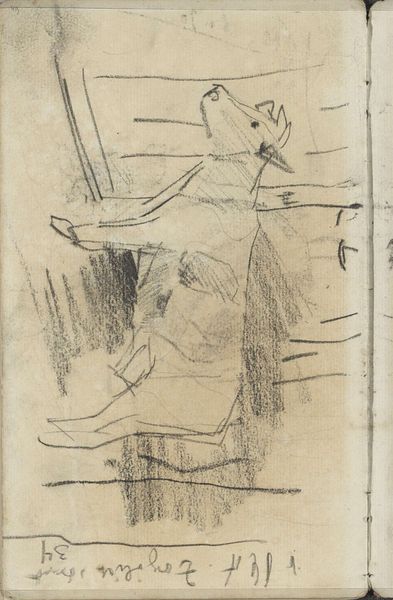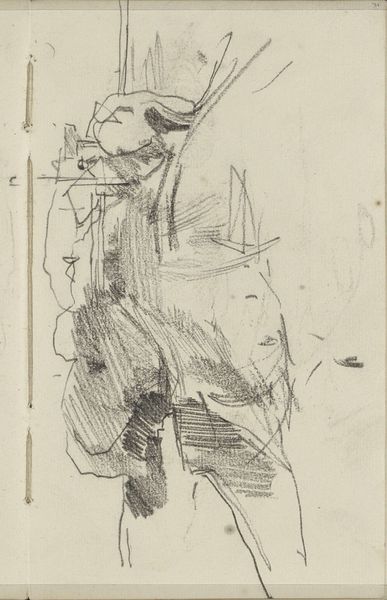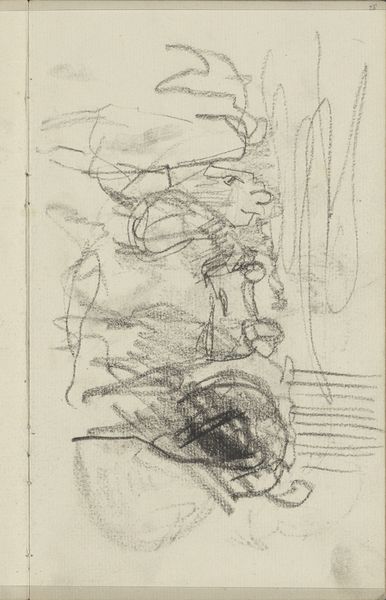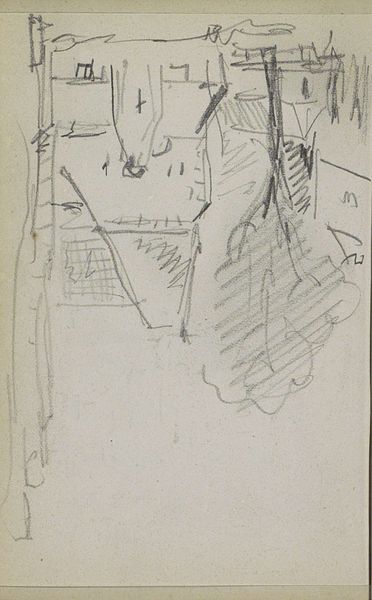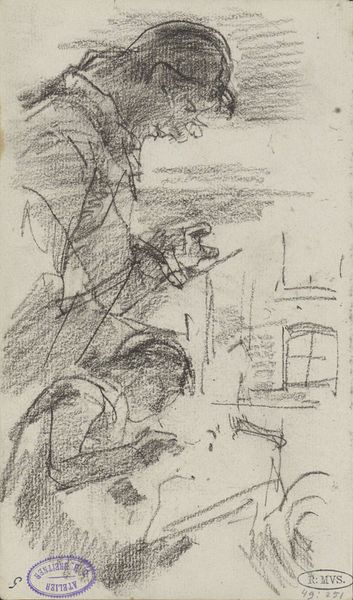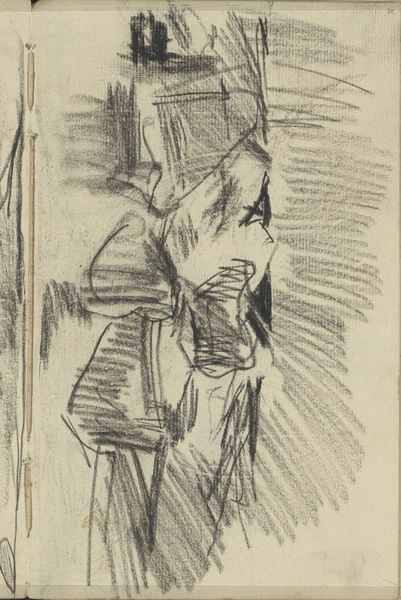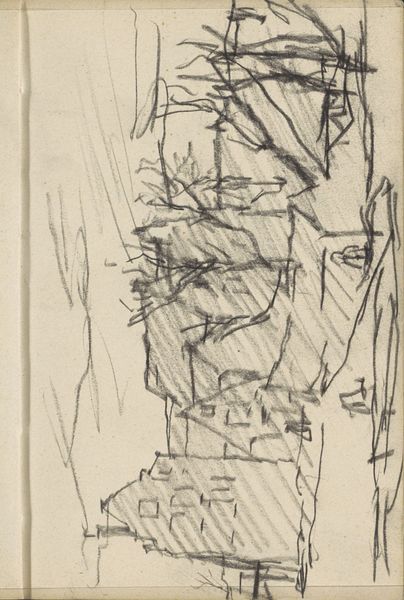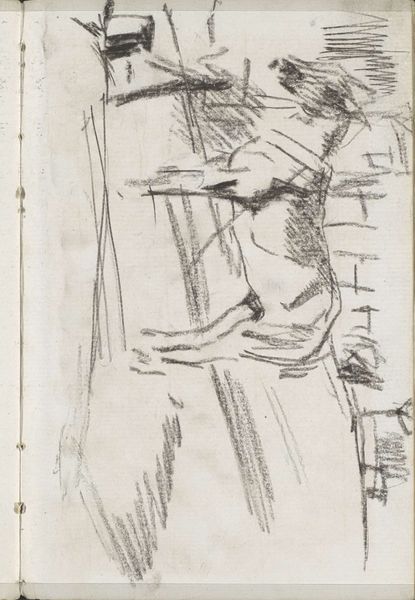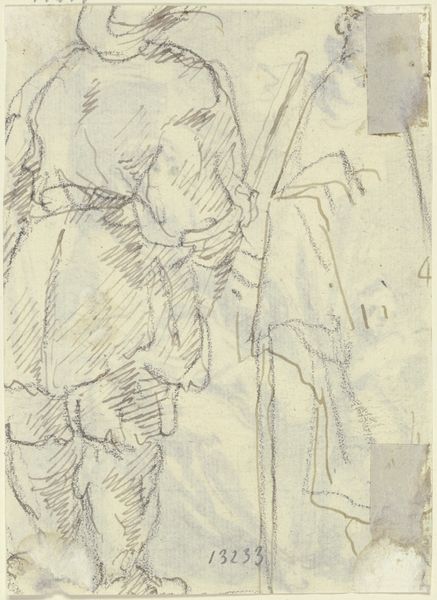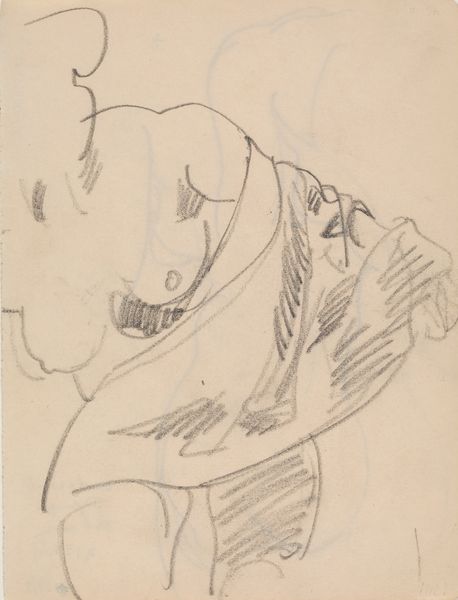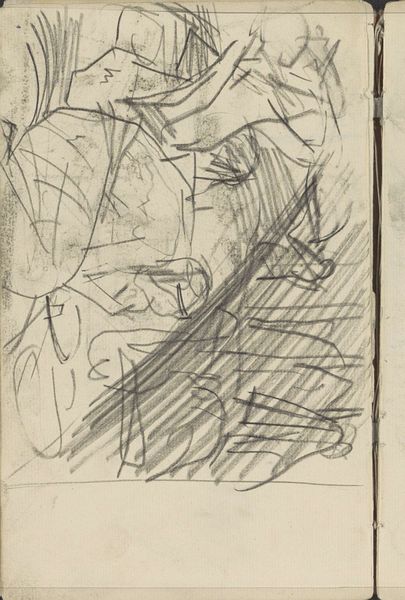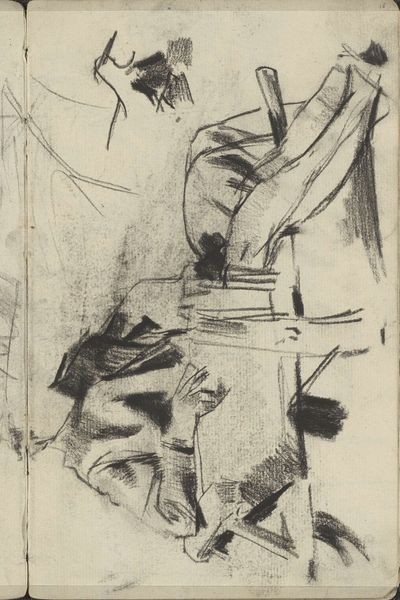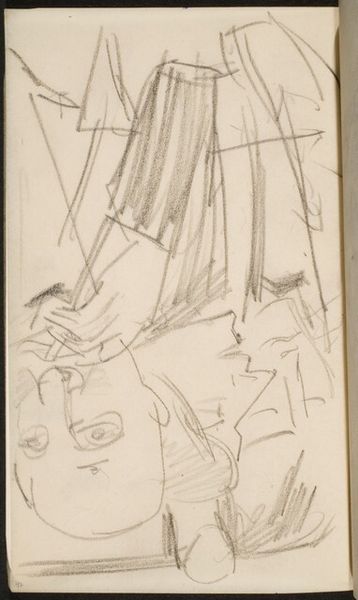
Dimensions: height 191 mm, width 114 mm
Copyright: Rijks Museum: Open Domain
Editor: So, here we have Breitner’s "Two Figures Embracing," a graphite and pencil drawing, made sometime between 1873 and 1923. The figures are lightly sketched, almost fleeting. What really strikes me is the raw quality of the materials. What can you tell us about the drawing, more broadly? Curator: Well, let's think about graphite and pencil themselves. They’re readily available, inexpensive materials, tools for both the master and the amateur. Breitner using these, especially for a study of such intimacy, asks us to consider the social implications of artistic production. How does the accessibility of the materials affect the subject matter, and perhaps even the intention of the piece? Editor: That’s interesting. So it's less about high art and more about the act of observing and quickly capturing something real? Curator: Exactly. Consider the social context of Impressionism. Artists were turning away from grand historical narratives and towards everyday life. This drawing, with its visible pencil strokes and unfinished quality, foregrounds the labor, the very *making* of the image. Editor: I see what you mean. It’s less about the finished product and more about the process. So how does that influence our interpretation of the subject – the embracing figures? Curator: I think it directs our attention to the artist’s hand, and the transient nature of the moment. We’re not given a polished, idealized scene, but rather a glimpse, an impression of human connection rendered through simple, readily available materials. This challenges traditional hierarchies of artistic value by placing emphasis on process over perfection. Editor: I hadn’t thought of it that way. Looking at the drawing with materials in mind opens up a whole new way of interpreting it. Thank you. Curator: My pleasure. It's always illuminating to consider how materials and means of production shape our understanding of art.
Comments
No comments
Be the first to comment and join the conversation on the ultimate creative platform.
